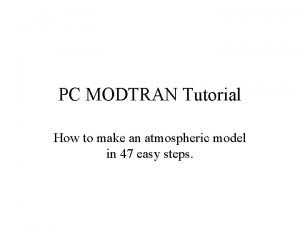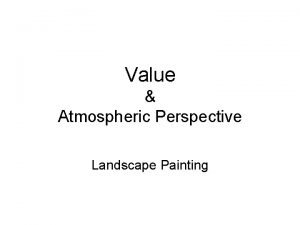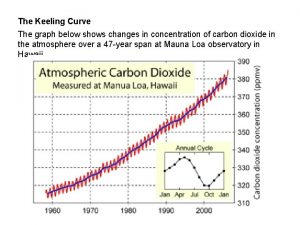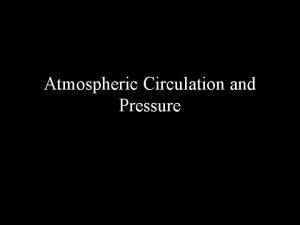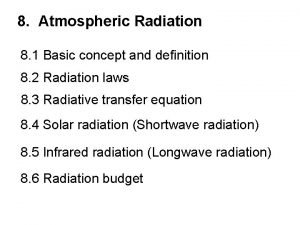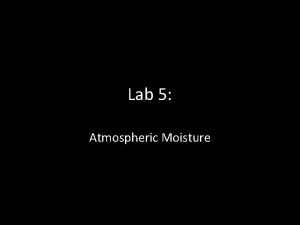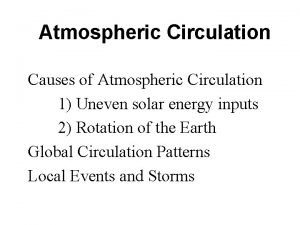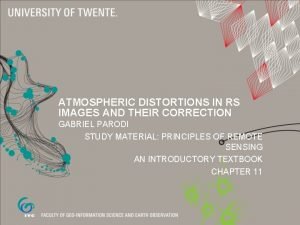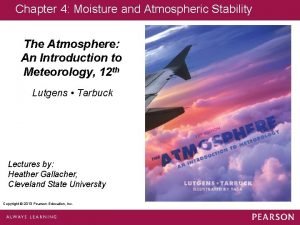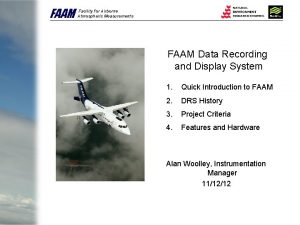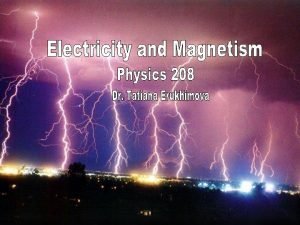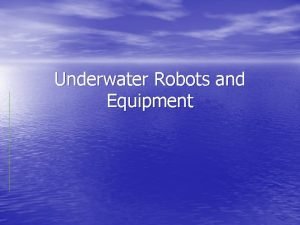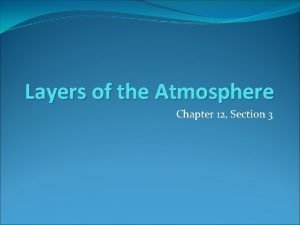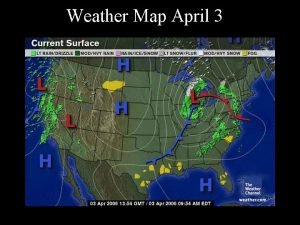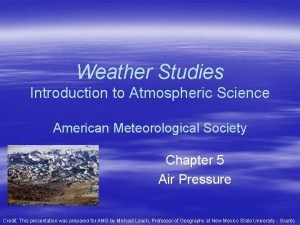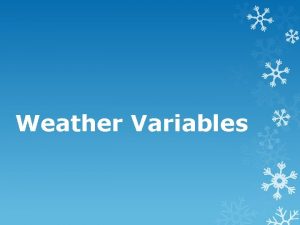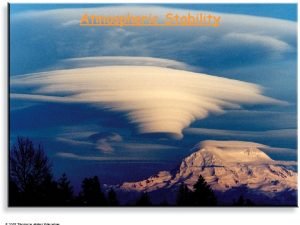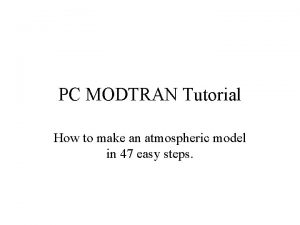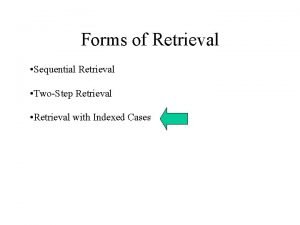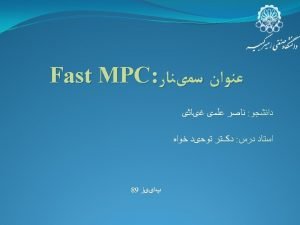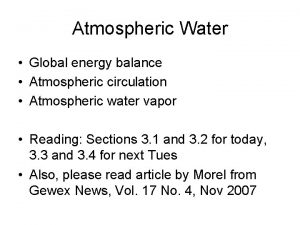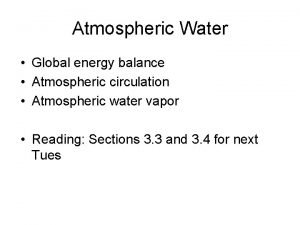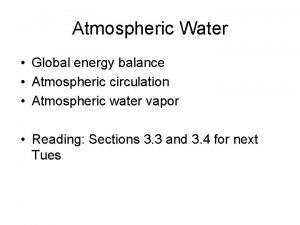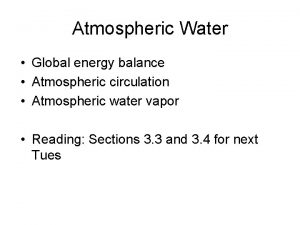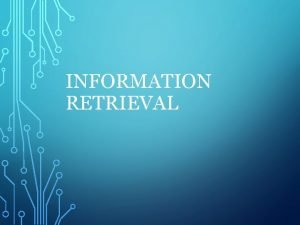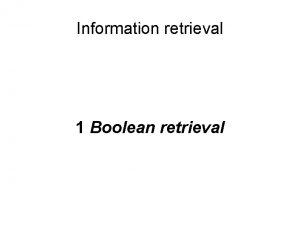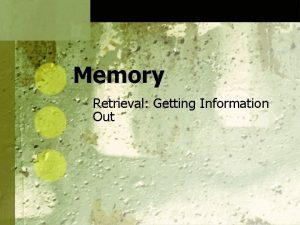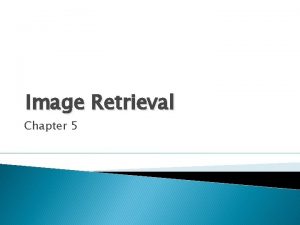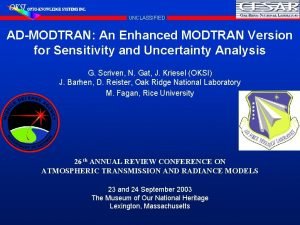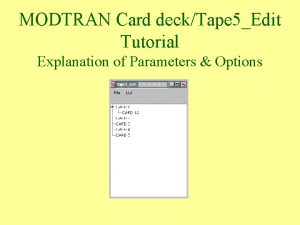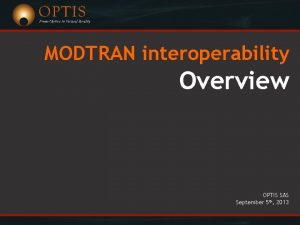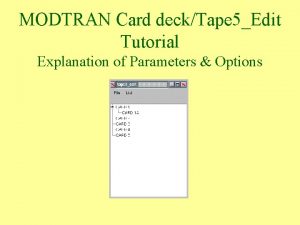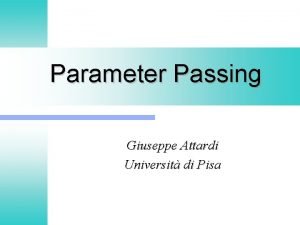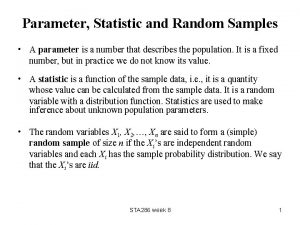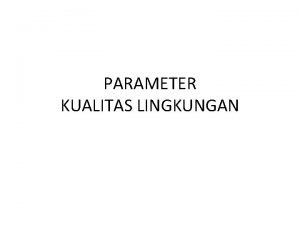Using MODTRAN for Atmospheric Parameter Retrieval under the

























- Slides: 25

Using MODTRAN for Atmospheric Parameter Retrieval under the ASCOPE Architecture 13 June 2007 Gordon Scriven 1, Nahum Gat 1, James Burke 2 1 Opto-Knowledge Systems Inc. (OKSI) 19805 Hamilton Ave Torrance, CA 90502 Phone: (310) 756 -0520 gordon@oksi. com nahum@oksi. com 2 Computer Sciences Corp (CSC) 4090 Memorial Pkwy SE Huntsville, AL 35802 Phone: (256) 885 -7924 jburkejr@csc. com

Outline • • • ASCOPE Algorithm MDA KA/WHT Measurements Sample ASCOPE Results ASCOPE Demonstration Status/Summary

ASCOPE Algorithm Automated – a full algorithmic approach for generating optimal solutions Simultaneous – considers ALL problem inputs simultaneously, not one-at-a-time Constraint – Uses Bayesian Estimation to constrain the adjustments to the model inputs within their specified uncertainty range Optimized – Minimizes the residual between model predictions and sensor measurements Parameter Extraction - extracts the most likely values of the model input parameters based on (i) the smallest residual, and (ii) all constraints. • ASCOPE uses local derivatives to efficiently solve the multivariate optimization • Ideally, derivatives are obtained via Automatic Differentiation • However, ASCOPE can also work with numerical derivatives

ASCOPE Modular Architecture • Input to ASCOPE is: • Set of sensor measurements/uncertainties • List of code inputs/uncertainties • Baseline code input files • Output of ASCOPE is: • Best estimate model predictions • Corresponding optimized inputs • ASCOPE can function with various math solvers and Objective Functions • ASCOPE can function with any physical model (with interface wrapper) • Existing models that are ASCOPE ready: • Atmospheric Transport (MODTRAN) • Rocket Engine Performance (VIPER) • Missile Exhaust Plume Flowfields (SPF) • Missile Plume Signatures (SPURC) • Missile Hardbody Signatures (OSC)

Software Wrapper for AD-Enhanced Physical Model • Wrapper is needed to allow the physical model to interface with ASCOPE Wrapper for Physical Model α* • Wrapper receives adjusted input parameters and returns: üAdjusted model predictions üJacobian matrix Input utilities AD-Enhanced Physical Model (e. g. AD-MODTRAN) Output utilities q*, S Input files Database files • Input/output utilities are needed to: üConvert parameter units üApply input parameter correlations not included in physical model üresample model data to match measurement format • In addition to the Jacobian, the AD-enhanced model also provides the ability to adjust any input parameters after they have been read-in üDon’t need to understand complicated input files üCan easily adjust library input parameters üCan even adjust hardwired code parameters without recompiling

Outline • • • ASCOPE Algorithm MDA KA/WHT Measurements Sample ASCOPE Results ASCOPE Demonstration Status/Summary

CSC/OKSI Measurements at Airforce Maui Optical Site (AMOS) 1. 2 m binocular telescope • CSC: Kill Assessment Fireball Sensor (KAFS) • CSC: Kill Assessment Dual Imager (KADI) • OKSI: 4 -Dimensional Imaging Spectrometer (4 DIS)

What Is Kill Assessment/War Head Typing? • The US missile defense shield uses a multi-tiered hit-to-kill strategy. • KA is the real-time determination if an incoming threat vehicle has been rendered “non-lethal”. • KA provides the basis for subsequent engagement decisions (shoot-lookshoot). • WHT is the process of determining what was hit (nuclear, chemical, etc. ). • WHT provides the basis for how to react • Residual fallout (consequence mitigation) • Do we shoot back (command reaction decision). • Combined KA/WHT can only be achieved with optical sensors. • Understanding of missile intercept phenomonology is essential to KA/WHT success.

Cleared for public release Sample Missile Intercept Measurements (movies) SWIR Imager MWIR Imager • CSC/OKSI KA measurements include: • High speed imagery • High speed multi-band radiometers • High speed imaging spectroscopy. • A missile intercept event results in complex phenomenology (mechanical breakup, plasma, detonation/combustion, expansion, scattering). • Accurate atmospheric compensation is essential for post mission phenomological investigations.

Outline • • • ASCOPE Algorithm MDA KA/WHT Measurements Sample ASCOPE Results ASCOPE Demonstration Status/Summary

Using Solar Measurements to Extract Atmospheric Parameters Microtops II Sun Radiometer Ocean Optics VNIR Spectrometer Solar tracking mount • Solar measurement setup design/operated by CSC • Currently, only sun radiometer is being used to extract atmospheric properties • Spectrometer measurements have yet to be fully integrated into the final analysis product • ASCOPE demonstrated to extract atmospheric parameters using VNIR spectrometer

Spectrometer Measurements and Baseline Model Predictions Parameter Baseline Uncertainty Visibility C 1 C 2 Fumg FH 2 O 50 km -0. 6 -0. 04 1. 0 0. 3 50% 100% 5% 50% • MODTRAN is used to predict the apparent solar irradiance • Baseline inputs from local meteorological data produces poor agreement with measurements • Characterization of the atmosphere can be obtained by adjusting appropriate model inputs within their uncertainty bounds until an optimized match is obtained • When many parameters are involved, this process can not be done manually

Analytical Expression for Aerosol Spectral Trend lnt = C 0 + C 1 lnl + ½*C 2(lnl)2 (1) t = optical depth l= wavelength (µm) C 0, C 1, C 2 constants to be extracted C 0: lnt at l=1µm C 1: 1 st derivative (dlnt/dlnl) at l=1µm C 2: 2 nd derivative (d 2 lnt/dlnl 2) at l=1µm • MODTRAN was modified to invoke “user specified” analytical definition of aerosol extinction (as opposed to tabular input) (1) N. T. O’Neill, et. Al. , “Spectral Discrimination of Course and Fine Mode Optical Depth”, J. Geophys. Res 108, 4559 (2003)

AD Provides Turnkey Sensitivity Analysis of All Input Parameters Water, Pressure, Aerosol Factors Aerosol Spectral Coefficients • AD produces sensitivity output efficiently and in a user friendly format • Sensitivity can be used to identify the most influential input parameters and determine which outputs they most affect • For example, the plot on the left shows that apparent irradiance is most sensitive to the pressure factor at the O 2 760 nm absorption band. O 2 band can be used to more accurately determine the level molecular scattering and therefore better isolate molecular scattering from aerosol extinction

ASCOPE Results Parameter Baseline Visibility C 1 C 2 Fumg FH 2 O 50 km -0. 60 -0. 04 1. 00 0. 30 Optimized 99 km (+98%) -1. 400 (-120%) -0. 037 (+11%) 0. 985 (-1. 5%) 0. 450 (+52%) • ASCOPE automatically adjusted the baseline inputs to better match sensor measurements • Baseline inputs were adjusted within their specified uncertainty bounds • ASCOPE used AD-MODTRAN to efficiently converge on the optimal solution

ASCOPE Convergence Starting point (baseline values) Converged solution (optimized values) • ASCOPE performs multivariate optimization to minimize a defined Bayesian objective function • It is not possible to visualize the multivariate convergence history (only two variables can be visualized) • Two variables are shown above (VIS and C 1 are the most influential aerosol spectral coefficients) • The plot is an overlay of the ASCOPE convergence history over the objective function “response surface” • This plot shows that ASCOPE converges to the minimum of the objective function • ASCOPE execution took 64 seconds; creating response surface took 49 minutes

Outline • • • ASCOPE Algorithm MDA KA/WHT Measurements Sample ASCOPE Results ASCOPE Demonstration Status/Summary

ASCOPE Demonstration Allow ~10 minutes

Outline • • • ASCOPE Algorithm MDA KA/WHT Measurements Sample ASCOPE Results ASCOPE Demonstration Status/Summary

ASCOPE Status/Plans • Primary development/testing for missile exhaust plume measurements • MODTRAN implementation on an as needed basis for atmospheric characterization • Upgrades to KA solar measurements are planned: • Include Almucantar scans to extract aerosol scattering properties • Upgrade measurement hardware • Extend to SWIR/MWIR (larger particles, additional gas species) • Color compensating filters (high SNR at all bands) • Automatic shutter (frequent dark fields) • ASCOPE will be tailored to specific needs • Coordinate with other solar/sky measurement processes/activities

Summary • The ASCOPE algorithm was developed to automatically adjust computer model inputs (within their uncertainty bounds) to better match sensor measurements (within their specified uncertainty bounds). • AD-enhanced versions of the computer models are used to: 1) allow user to identify the most influential input parameters 2) allow ASCOPE to efficiently converge on the optimal solution • ASCOPE was originally developed for the AD-enhanced JANNAF plume codes to best match model predictions to sensor measurements. • ASCOPE was demonstrated with AD-MODTRAN to extract atmospheric parameters based on spectrally resolved solar irradiance measurements. • ASCOPE and AD can be applied to any computer model.

Back Up Charts

Objective Function r* = vector of perfect sensor measurements q = vector of model outputs a* = vector of optimized model inputs a = vector of base model inputs r = vector of actual sensor measurements Difference between optimized prediction and perfect measurement Difference between optimized input and baseline input Q = (q (a*) – r*)2 + (a* - a)2 sq 2 sa 2 Confidence in model prediction Uncertainty in model input Difference between perfect measurement and actual measurement + (r* - r)2 sr 2 Uncertainty in sensor measurement

Universal GUIs to Facilitate AD-Enhanced Code Operation

Missile Intercept Imagery SWIR MWIR • Optical measurements of missile intercept events provide both Kill Assessment and War Head Typing • A high speed intercept event results in complex phenomenology (mechanical breakup, plasma, combustion, expansion, scattering) • Accurate Atmospheric Compensation is desired for phenomological investigation
 Modtran tutorial
Modtran tutorial Hadley cells
Hadley cells Atmospheric perspective watercolor
Atmospheric perspective watercolor The graph below shows atmospheric carbon dioxide
The graph below shows atmospheric carbon dioxide Atmospheric carbon dioxide graph
Atmospheric carbon dioxide graph Single cell model of atmospheric circulation
Single cell model of atmospheric circulation Atmospheric
Atmospheric Lab 5 atmospheric moisture
Lab 5 atmospheric moisture Atmospheric convection
Atmospheric convection Atmospheric distortion correction
Atmospheric distortion correction Prediction explanation
Prediction explanation Atmospheric chemistry lecture notes
Atmospheric chemistry lecture notes Atmospheric stability
Atmospheric stability Facility for airborne atmospheric measurements
Facility for airborne atmospheric measurements Dr tatiana erukhimova
Dr tatiana erukhimova Atmospheric diving system
Atmospheric diving system The four main layers of the atmosphere
The four main layers of the atmosphere Retention definition in prosthodontics
Retention definition in prosthodontics Usairnet temperature map
Usairnet temperature map Atmospheric heaven
Atmospheric heaven Low atmospheric pressure
Low atmospheric pressure Atmospheric pressure at different altitudes
Atmospheric pressure at different altitudes Weather studies introduction to atmospheric science
Weather studies introduction to atmospheric science What are weather variables
What are weather variables Atmospheric vortex engine
Atmospheric vortex engine Unstable equilibrium definition
Unstable equilibrium definition
